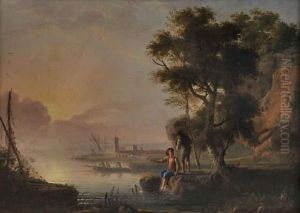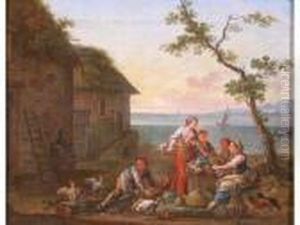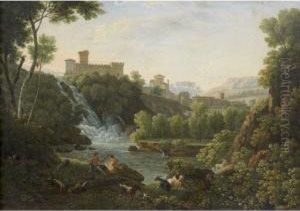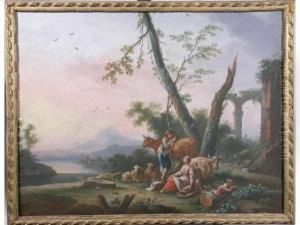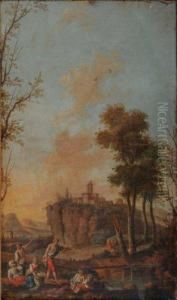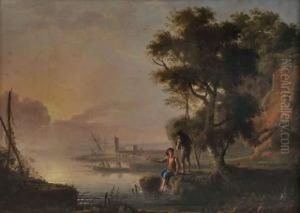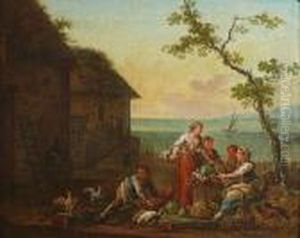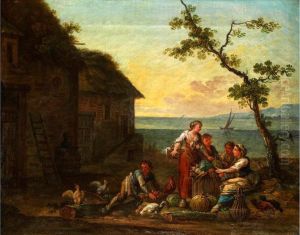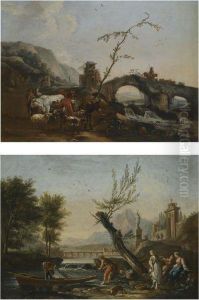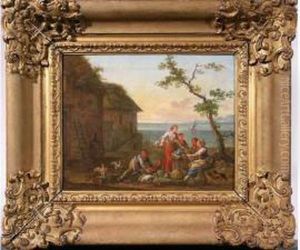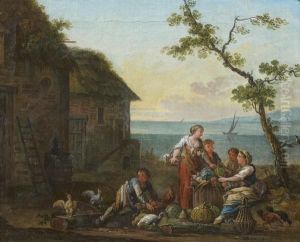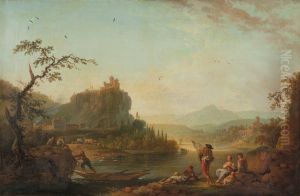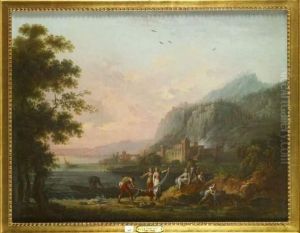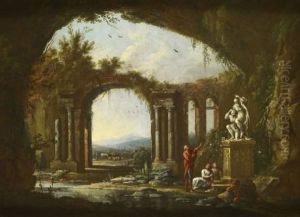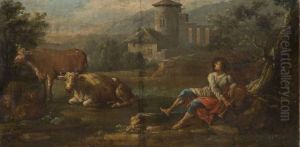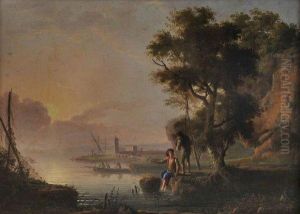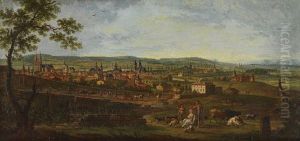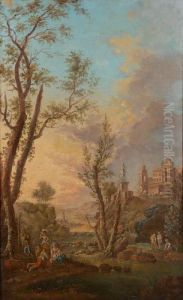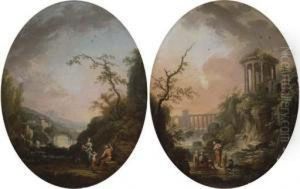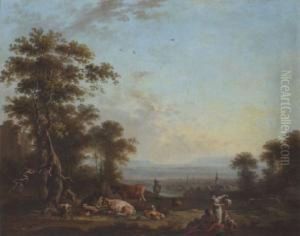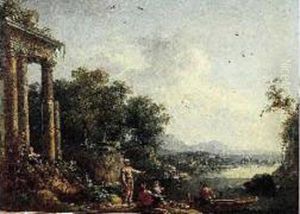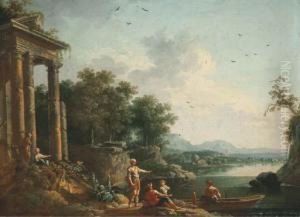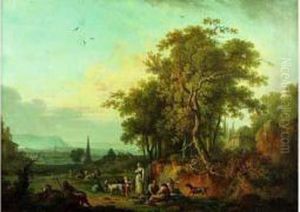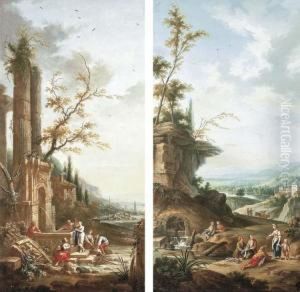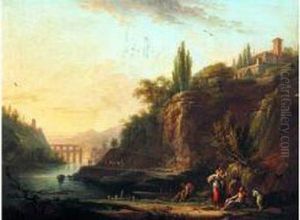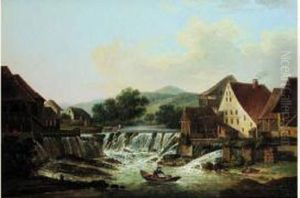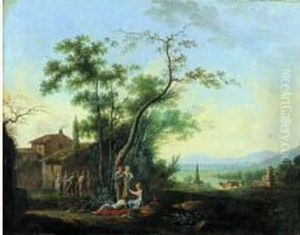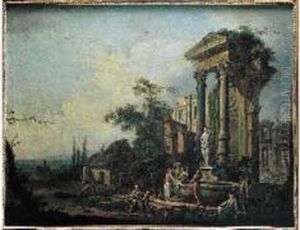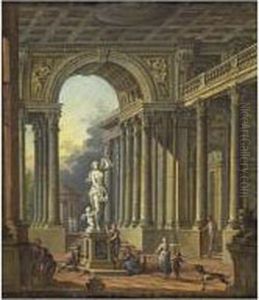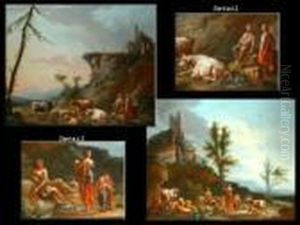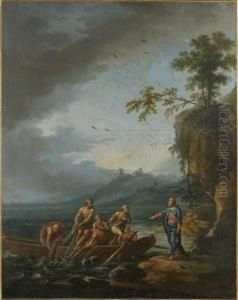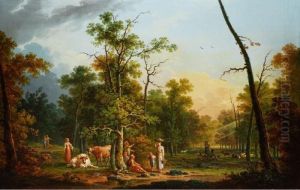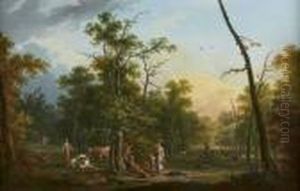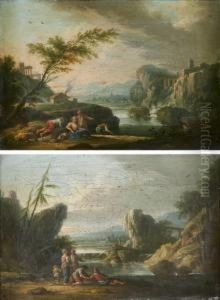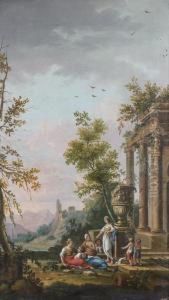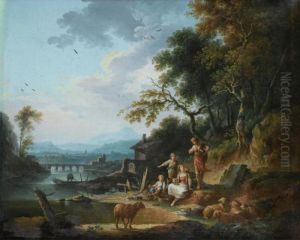Jean-Baptiste Claudot De Nancy Paintings
Jean-Baptiste Claudot, also known as Claudot de Nancy, was a French landscape painter born in 1733 in Badonviller, France. He is often associated with the Lorraine region where he spent a significant part of his career. Claudot was primarily known for his picturesque landscapes that captured the essence of the French countryside, often imbued with a serene and idyllic quality.
Claudot received his early training in Nancy, which was the capital of the Duchy of Lorraine, and he was heavily influenced by the Lorraine school of painting. His work was characterized by its fine detail, soft color palette, and the peaceful atmospheres he created. His landscapes often included figures and were executed with a delicate touch, reflecting the Rococo style that was popular during his time.
Throughout his career, Jean-Baptiste Claudot enjoyed the patronage of local aristocrats and members of the bourgeoisie, which allowed him to work on various commissions. Despite this, he never achieved the level of fame or recognition of some of his contemporaries. Claudot's works were, however, appreciated for their charm and technical skill, and they contributed to the artistic scene of the region.
His paintings remain as a testament to the 18th-century French provincial landscape genre, and while he may not be as well-known as other artists of his time, his work is still appreciated by art historians and collectors today for its contribution to the regional art history of Lorraine. Jean-Baptiste Claudot passed away in 1805, leaving behind a body of work that continues to be studied and admired for its depiction of the rural beauty of France.
